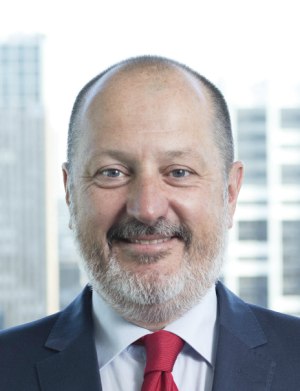
The morning after the AFL Grand Final, and a few hours before the NRL Grand Final, I did a little LinkedIn post, pondering: “The AFL Grand Final is broadcast live and free throughout Australia. After every goal there is an ad and the remote control is not used. Three million plus people are watching. I did not see a new advertiser, a new campaign, a new idea. Did I miss something? Perhaps… I shall be watching the NRL this evening with equal commercial interest.”
That was about a week ago.
Since then, that post has been viewed over 100,000 times, liked by hundreds of people and commented on quite heavily.
The commentary is interesting and perhaps reflects the confusing times we live in today.
Some of the people who commented believe the idea that the remote control is not used is just plain wrong and that every time an ad comes is an opportunity to target the viewer via their social media feed. After all, the phone will be picked up after a goal and when the telly turns to the ads.
Others wondered why media agencies don’t sell these moments in the AFL and NRL Grand finals to their clients as the Australian equivalent of advertising in the Super Bowl.
There was much musing about the price of entry, that is, the sheer cost of being involved in a Grand Final as an advertiser.
Many wondered why there was a need for something new, arguing that the Grand Finals simply provide an opportunity to drive home the increased reach and frequency required these days to get commercial traction.
Some of the people who commented on my post lamented the loss of great advertising ideas; the launch of an epic Carlton Draught television commercial, for example.
A lot of people, it appeared, just hate ads interrupting anything.
One comment suggested we need an award category specifically targeting such “moments” in big television events in order to get advertisers and agencies to take notice – and to take action.
And apparently the obsession with direct ROI on advertising spending in Australia means that clients will only spend where they can see measurable results.
I have not done a sophisticated sentiment analysis, but I would suggest the majority of people who responded to the post were lamenting the lost opportunity to showcase new, great advertising and creativity in big television events.
My take on all this debate is simple.
I believe the single greatest advance in the new creation of new channels for marketing is the fact we now watch television with a mobile phone, an iPad, a laptop, or all three. This provides advertisers with a great opportunity to use TV as the shopfront and the consumers’ devices as the cash register.
Live and free TV aggregates significant audiences around the same storyline, giving advertisers not only a commercial opportunity but also a cultural one. At the same time, the cost of television production has come down dramatically.
The ability to simultaneously go large and hyper target (a simultaneous TV / Social Media mix) has barely been utilised and provides a significant opportunity to generate sales.
Some numbers have been provided to me by ThinkTV:
- The NRL audience universe on Grand Final day is 24.48 million. All NRL Grand Final-related television programs delivered 6.143 million viewers.
- The AFL Grand Final audience universe is, of course, the same as with the NRL Grand Final. The total audience delivery of all AFL Grand Final-related programs was 6.992 million.
- The combined reach of the two Grand Finals was 9.443 million.
- The average time spent watching the AFL Grand Final was 1 hour and 45 minutes.
- The average time spent watching the NRL Grand Final was1 hour and 10 minutes.
The volume of ad skipping during the Grand Finals is unknown; I made an assumption that it would be minimal during this type of content.
I have not been able to ascertain an accurate CPM, but I would imagine it is around $25.
It turns out I did miss some brands that launched new ads on the day, including the South Australian Tourism Commission and Coke. Seven created some new content with McDonald’s, I believe Clive Palmer gave it a crack and Telstra produced a 5G message, with Jeremy Nicholas, executive director of marketing at Telstra, posting on LinkedIn: “We see strong ROMI when we deliver a relevant message to a scaled audience… which is marketing 101.”
Thanks to all who viewed, posted and liked what I had to say. It has been a great – and hopefully valuable – conversation.
Russel Howcroft is a partner and chief creative officer at PwC


